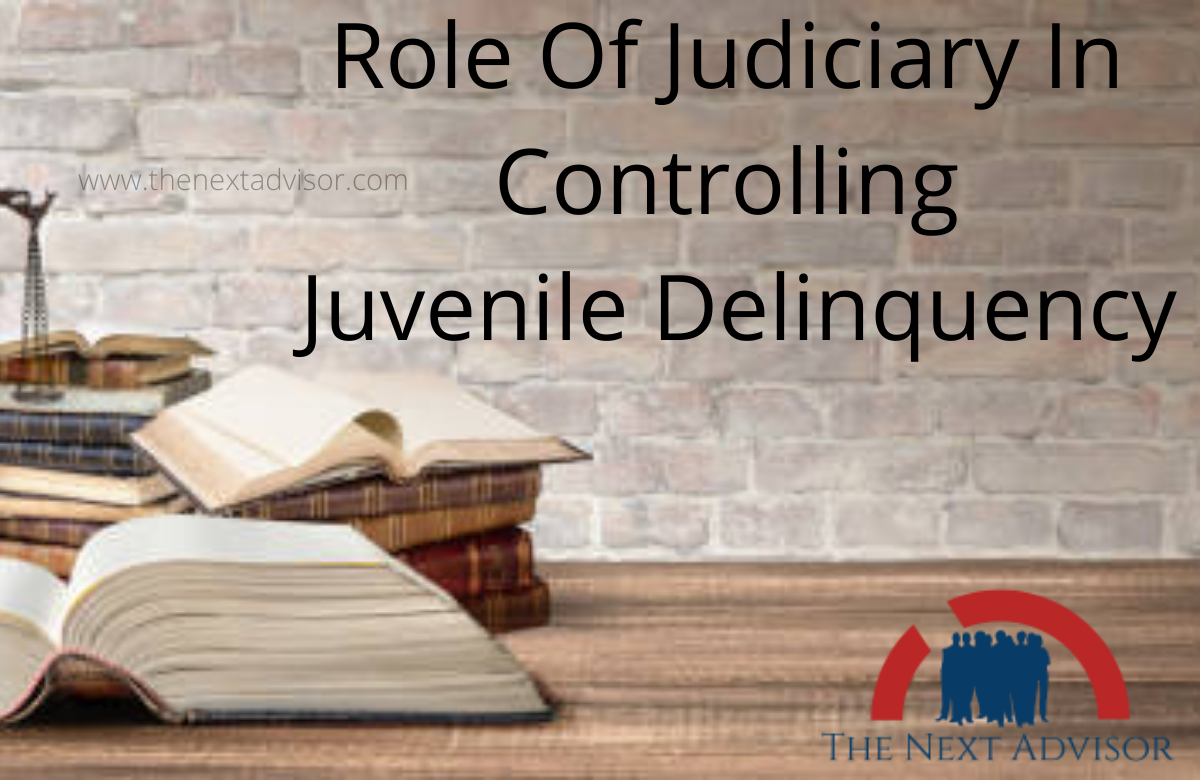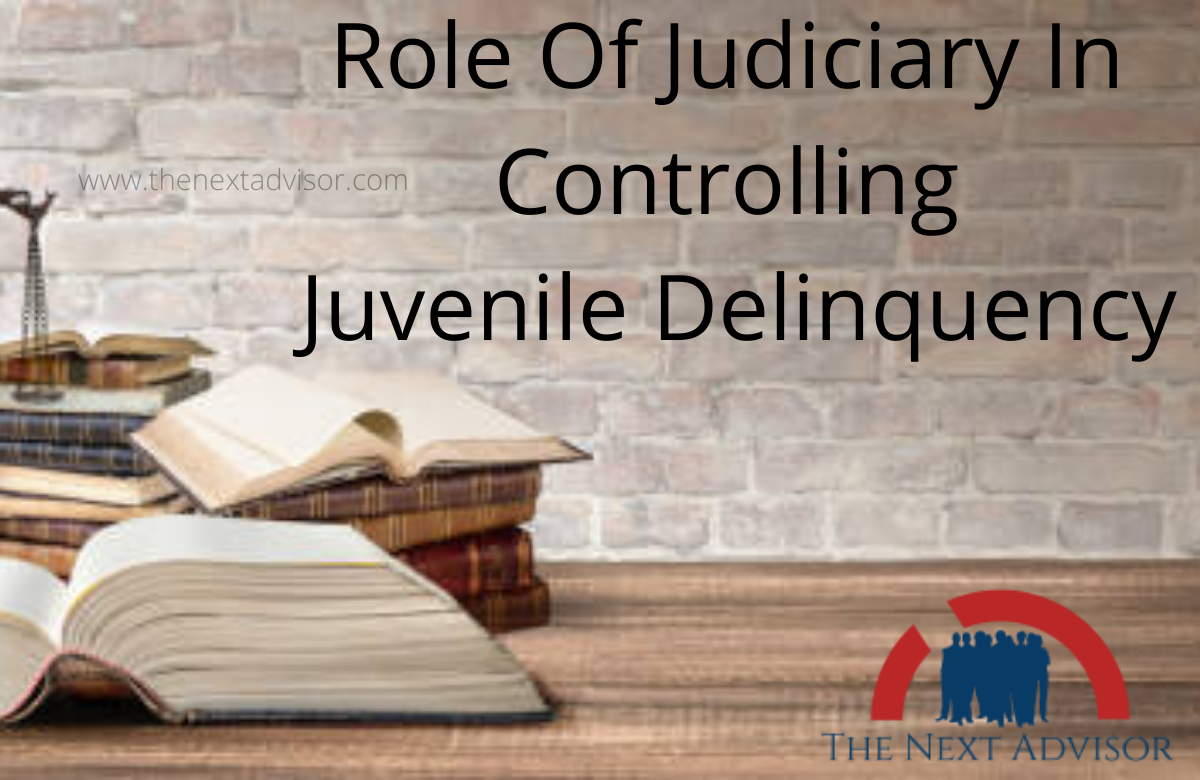Crime committed by children is increasing day by day. Therefore the knowledge and improvement in the Role Of the Judiciary In Controlling Juvenile Delinquency is very important in today’s era.
INTRODUCTION of the topic i.e., Role Of Judiciary In Controlling Juvenile Delinquency
Juvenile delinquency is a rising issue, not only in India but also worldwide. In India, the Juvenile Justice System mainly deals with the children who are in conflict with the law or who are in need of protection and care and provides them with proper care, rehabilitation, correction homes, etc. suiting their best interests.
There has always been a presumption that juveniles or children should be dealt with as leniently as possible since either they are incapable of being criminal-minded or even if they are so, it is due to some external influence. However, currently, crimes among juveniles are on the increase.
In this regard, stricter laws are being introduced – the Juvenile Justice Act of 1986 and Juvenile Justice (Care and Protection of Children) Act, 2000 and the latest being the Juvenile Justice (Care and Protection of Children) Act, 2015.
The Juvenile Justice (Care and Protection of Children) Act, 2015: an overview
The Act was passed in 2015 to include many new provisions keeping in mind the increasing crime rate among children below the age of 18. It mandates the establishment of at least one Juvenile Justice Board and Child Welfare Committee in each district. The Act also focuses on juvenile rehabilitation and care through various correction homes and also contains adoption-related clauses in the better interest of the child.
DEFINITION
“Child’ is defined under the Juvenile Justice Act, 2015 as someone who has not completed 18 years of age (a minor) and it classifies a child in two ways, namely,
1. Children in conflict with laws.
2. Children in need of care and protection.
“Juvenile’ is also defined in the same manner as someone who is below 18 years. Thus, this Act removed the negative connotation which was attached to the word ‘Juvenile. So, a juvenile in conflict with the law is a child who is an offender, and a juvenile in the protection of the law is the abandoned child in need of legal help.
This Act includes a provision to deal with offenders between the age of 16 to 18 as adults if they commit a heinous offense. This change was included in the backdrop of the Nirbhaya Gang Rape Case of 2012 wherein one of the offenders was 17 years and a few months old but since at that time, there was no such law, he could not be tried as an adult. In penal laws, maxim doli incapax is used which means that children are deemed incapable of forming the intent to commit a crime because of their age.
In Satya Deo v. State of Uttar Pradesh (2020), it was held that the child will not be denied his right to be treated as a juvenile at the time of the commission of an offense if he was below 18 years even if the offense took place before the enforcement of the Act of 2000. As per Section 25 of the 2015 Act, the 2000 Act would continue to be applied to cases that were pending before the passage of the 2015 Act.
Satya Deo v. State of Uttar Pradesh and the Nirbhaya Gang rape case are important cases to understand the role of the judiciary in controlling juvenile delinquency.

Role Of Judiciary In Controlling Juvenile Delinquency
JUVENILE COURTS
The main function of juvenile courts and the role of the judiciary in controlling juvenile delinquency is to have a special and distinctive procedure to look into juvenile offenders. As opposed to what earlier criminal courts used to do, wherein there was no distinction made between juveniles and adults, the juvenile courts in present times give necessary protection to children as they are not in a position to properly defend themselves. The need was realized to make the process more reformative for juveniles rather than punitive.
Juvenile Justice Board is the Juvenile Court created under Section 4 of the Juvenile Justice Act (2015). Criminal justice administration is a state subject as per Schedule VII of the Indian Constitution.
Section 4 of the Act starts with a non-obstante clause i.e. which has an overriding effect over the Code of Criminal Procedure, 1973. This clause was discussed in the case Chandavarkar Sita Ratna Rao v. Ashalata S. Guram (1987).
It mandates the establishment of at least one Juvenile Justice Board in each district. This board will comprise a Principal Magistrate and 2 social workers at least one of whom should be a woman. The decision of the Principal Magistrate will be final. This principle is discussed under Section 4(2) of the Act.
In-State of Himachal Pradesh v. Happy (2019), the order passed by the Board was held to be void ab initio as the composition requirements were not fulfilled and the verdict was passed by a single member.
POWERS & FUNCTIONS of the Board
The role of the judiciary in controlling juvenile delinquency is handled by the juvenile justice board. The Board is empowered to deal with the cases under its jurisdiction and cases dealing with children in conflict with the law. The power exercised by the Board can also be exercised by the High Court or the Session Court when the appeals from the Board come to them.
The Board has the power to inquire into heinous offenses as per Section 15 of the Act and such a preliminary assessment can be disposed of within 3 months of bringing the juvenile in front of the board. The Board has to inform the parent or guardian of the child at every step of the process.
The Board shall ensure that the rights of the child are protected throughout the process of inquiry and rehabilitation and ensure legal aid for the child. The Board shall whenever necessary, provide the child with a translator if there is difficulty in understanding the language, and on payment of fees if required. It is the duty of the Board, wherever deemed necessary, to transfer a child in conflict with the law to a committee stating that the child is in need of care.
It also has a provision regarding filing a First Information Report (FIR) in case of an offense against a child in conflict with the law. Periodically conducting the inspection of residential facilities for children in conflict with the law and recommending various measures for improvement in the quality of services.



























